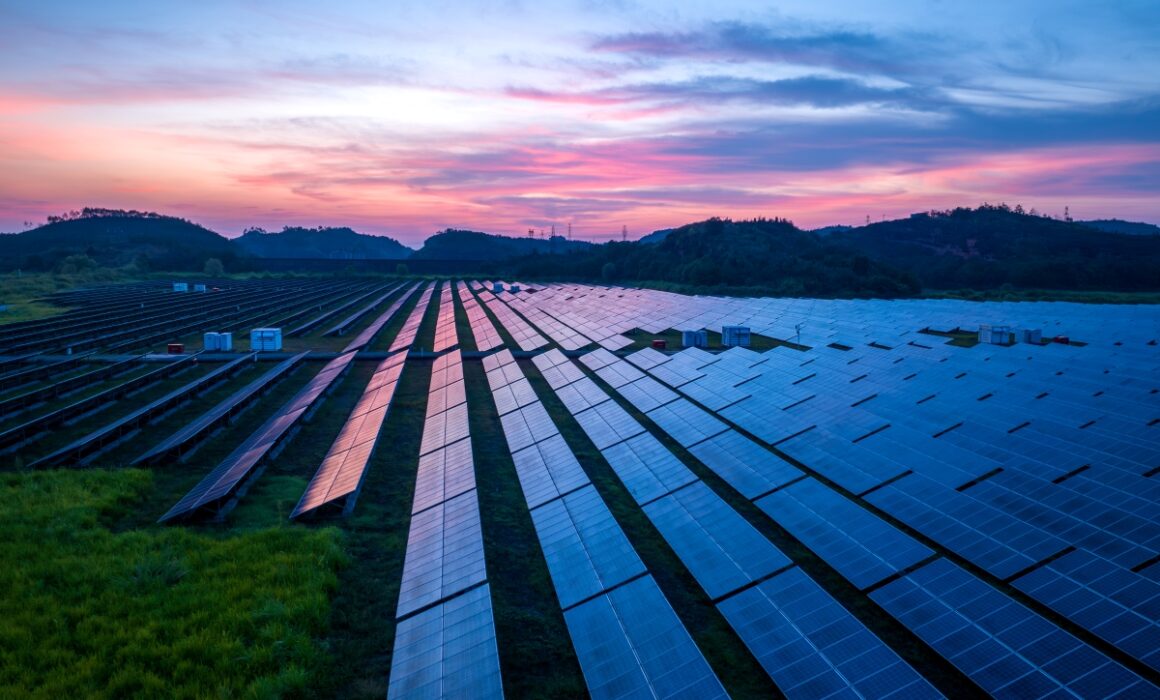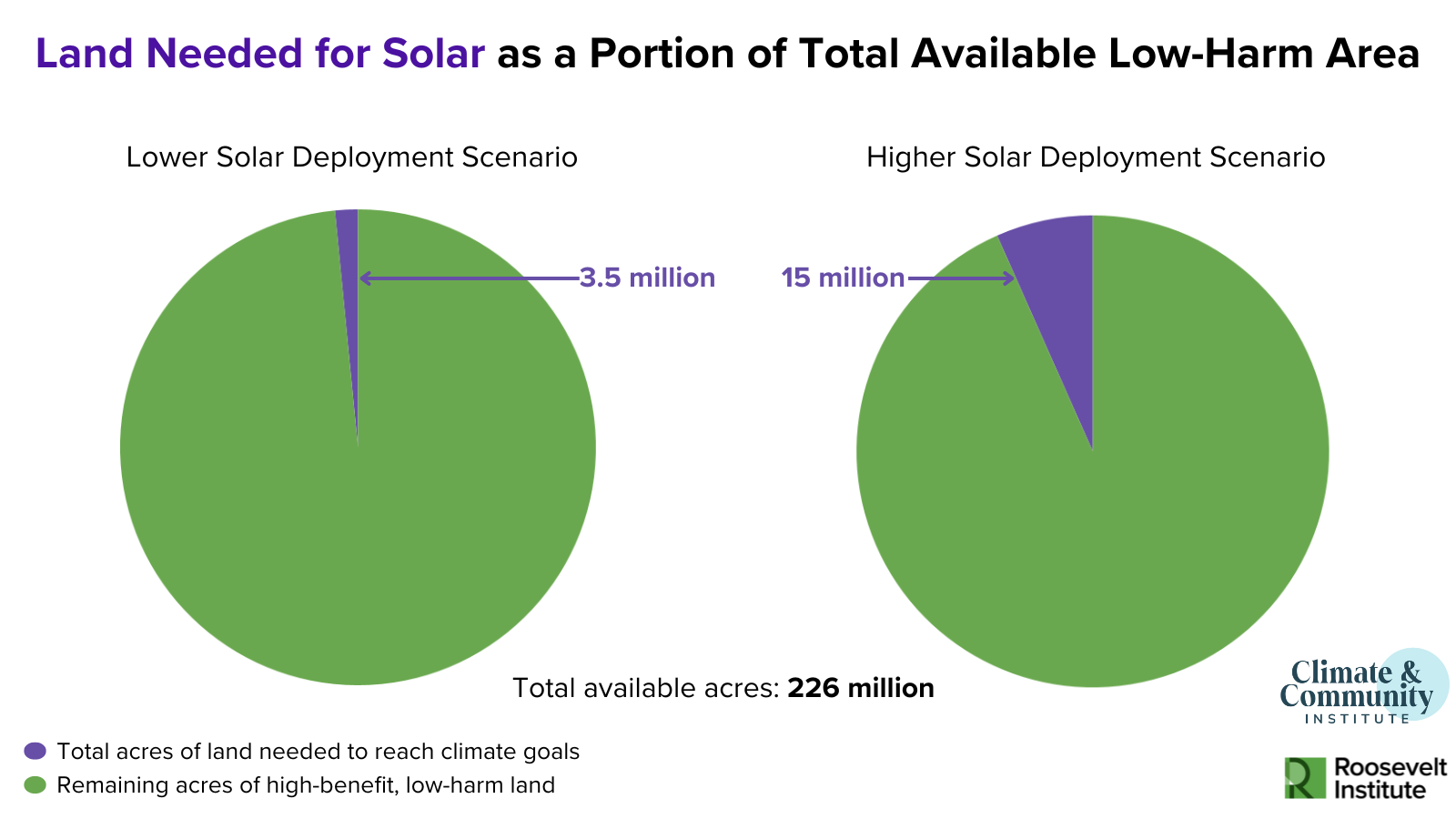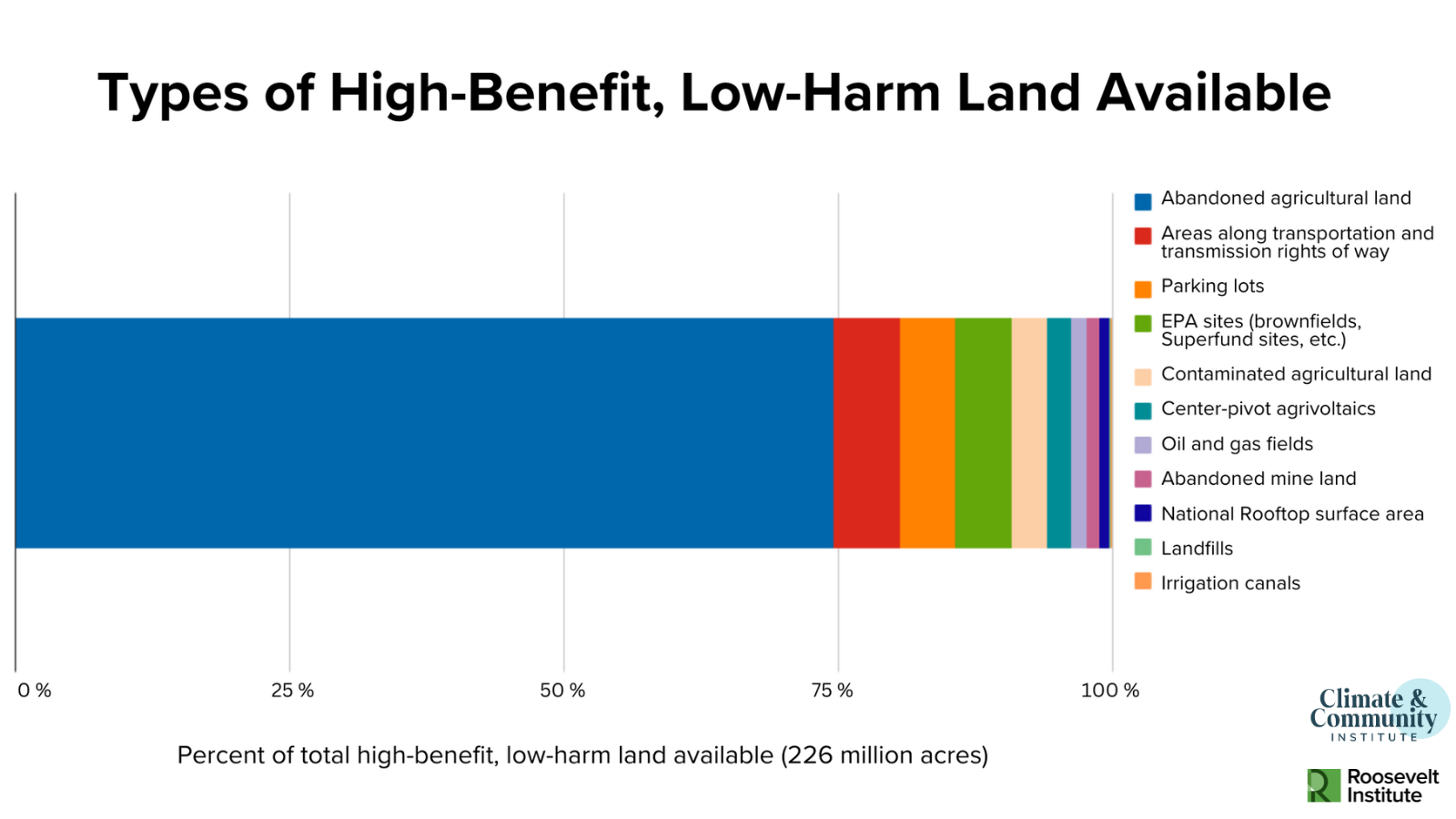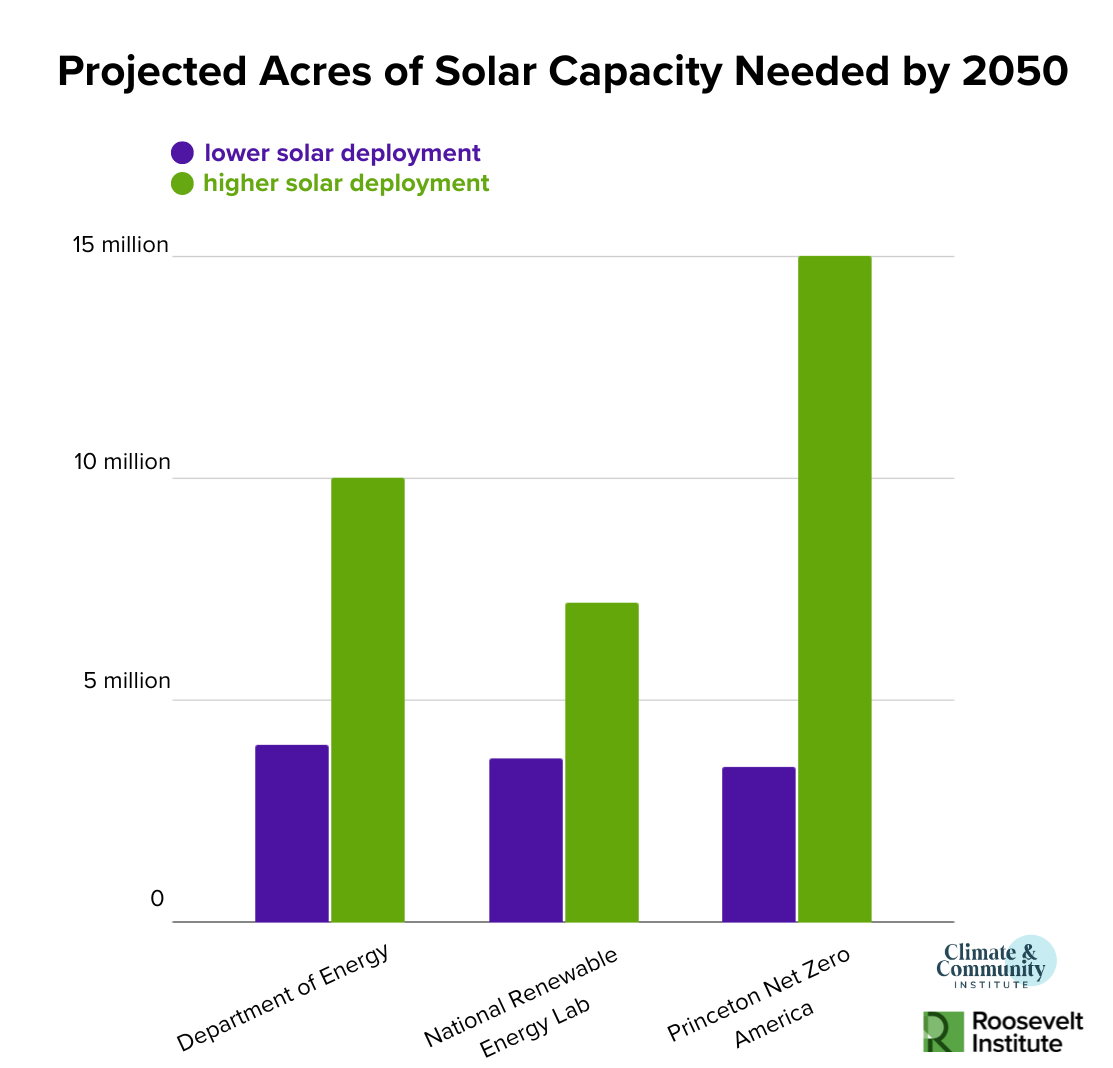Planning to Build Faster: A Solar Energy Case Study
October 1, 2024
By Johanna Bozuwa, Dustin Mulvaney, Isabel Estevez, Adriana DiSilvestro, Kristina Karlsson, and Sunny Malhotra

The following report is a collaboration with the Climate and Community Institute.
Executive Summary
Energy analysts suggest that the United States will need to build millions of acres of solar capacity—totaling an area potentially as large as West Virginia—to reach 100 percent clean electricity by 2035. However, the speed of the energy transition remains incommensurate with the urgency of the challenge.
Energy analysts and policymakers have speculated widely about the factors slowing down renewable energy deployment. Using the build-out of solar energy as a case study, this report evaluates the factors that hinder—and help—the transition to renewable energy, with the aim of bringing nuance and empirical evidence to debates around permitting reform and political-economic strategies to hasten renewable energy deployment.
The transition to renewables will require a whole host of resources and technologies to ultimately transform built environments and energy landscapes. This report argues that the government should coordinate solar siting and development to both ensure rapid deployment and balance the impact of the new infrastructure. Leaving that task to a wide variety of private-sector actors is not conducive to swift—let alone equitable—deployment.
Effective solar deployment requires a nationwide planning and coordination effort. This paper outlines four key roles for the federal government to play in advancing solar:
- Conducting whole-of-government, nationwide, multi-scalar land-use and site planning to identify high-benefit, low-harm solar sites across the country and organize deployment efficiently;
- Coordinating between federal, state, Tribal, and local governments to ensure that national planning coheres with local priorities;
- Embedding community, worker, and environmental benefits into solar deployment and development to build trust and support for the energy transition; and
- Creating and expanding support for public and nonprofit solar deployment companies, unburdened by the duty of generating profits for shareholders.
Our preliminary analysis shows that there are nearly 226 million acres of high-benefit, low-harm area available for solar deployment; the US only needs between 3.5 million to 15 million to meet solar deployment targets (see Figure 1). We identify several categories of high-benefit, low-harm sites that meet environmental quality and social equity criteria and include everything from abandoned agricultural land to transportation rights-of-way (see Figure 2). The area available for solar is 15 to 60 times what will be needed, suggesting that while land use and solar siting will present a challenge, it is ultimately a problem that can be resolved.
The “where” of solar deployment is important, but the “how” and “when” can be just as critical to its success. Connecting high-benefit, low-harm solar sites to the grid will require planning, policy, and investment in new transmission and distribution infrastructures. That is why we argue for community benefit, coordination across government scale, and public or nonprofit solar developers. Together, these measures can begin to align the US energy system with a progressive, post-neoliberal paradigm that recognizes the strategic nature of energy as a public good.
Figure 1. Area Needed to Meet 2050 Climate Action Targets Compared to Total Available Area of “High-Benefit, Low-Harm” Solar Sites. This shows how much land is available in climate action scenarios that deploy more solar versus less solar based on our review of several leading estimates of how much solar power will be needed to meet 2050 targets. Lower solar deployment scenarios meet climate action targets with less reliance on solar capacity by using other energy sources, technologies, and resources to decarbonize, whereas higher solar deployment scenarios rely on more solar power.
Figure 2. Types of Areas Available for High-Benefit, Low-Harm Solar Siting. This figure shows the relative availability of different types of solar siting opportunities across 226 million acres of high-benefit, low-harm sites, including abandoned agricultural land, contaminated agricultural land, vacant areas around center-pivot agriculture, highway and transmission line rights-of-way, abandoned mines, oil and gas fields, brownfields and Superfund sites, parking lots, irrigation canals, landfills, and rooftops.
Introduction: The Challenge of Solar Deployment
To meet climate objectives, the United States must rapidly transition to clean energy. The US Energy Information Administration (EIA) projects that power-sector carbon emissions will decrease up to 38 percent below 2005 levels by 2030—falling short of President Joe Biden’s commitment to a 50 percent reduction by then (US EIA 2023a; White House 2021a). That commitment already failed to align with the scenarios set out by the special report of the Intergovernmental Panel on Climate Change (IPCC) (2022) on maintaining the Paris Agreement’s 1.5°C target for a livable world. Clearly, the speed of the US energy transition remains incommensurate with the urgency and scale of the challenge.
Electricity from solar power will play a crucial role in replacing the fossil fuels used to generate electricity today. A range of different models project the future energy mix of the green electricity system, which include technologies such as carbon capture and advanced nuclear. Generally, solar and wind together are expected to make up somewhere between 60 to 80 percent of the mix by 2050, depending on assumptions and geography (Denholm et al. 2022; Larson et. al. 2021; Farnsworth and Gençer 2023).
This report uses solar energy deployment as a case study to explore the real-world dynamics at play in quickly developing clean energy. To meet the level of necessary utility-scale solar installations, the US will need to increase deployment by as much as 10 times by 2050. Different forecasts make different assumptions and projections about exactly how much solar the US will need (see Figure 3), but the bottom line is that the US is not on pace to meet ambitious climate action goals. To do so, it will need to deploy many times over the current amount of solar installed—and this needs to happen much faster.
Figure 3. Acres of Solar Capacity Needed by 2050. This figure shows model projections of how much solar capacity is needed by 2050 to meet climate action goals based on three studies (DOE 2021; NREL 2022; Princeton University 2021). We took each study’s lower solar deployment scenario and higher solar deployment scenario to show the ranges in each study.
In response to slow progress in displacing fossil fuels, a part of the US political zeitgeist has taken aim at environmental permitting as the specter responsible for slowing down solar and other technologies. Advocates of this view believe that the foundational reason that renewable technologies like solar are slow is because project developers in the US spend too much time in environmental review and are too often subject to National Environmental Policy Act (NEPA) litigation (Bennon and Wilson 2023), a finding directly contradicted by other studies (Adelman 2023; Dashiell, Buckley, and Mulvaney 2019). Research by analysts at Energy and Environmental Economics, Inc. (E3) found that “it is difficult to disentangle siting and permitting barriers and processes from other factors leading to renewable deployment and delays” (E3 2024). A Berkeley Lab survey of solar developers ranked local ordinances and zoning, interconnection queues, community opposition, and supply chain issues higher than environmental regulations, closely followed by lack of buyers for the project (Nilson and Stedman 2023). Thus, solar deployment raises many interlinked challenges that cannot be tackled solely via permitting reform.
The built environment will look very different when solar operates as a major electricity source, thus requiring a holistic understanding of interlinked deployment issues. Utilities historically built large-scale, centralized fossil power plants close to population centers. Many of these power plants are situated near communities of color or low-income populations, exposing them to hazardous air pollution and degrading local ecologies. Solar energy development, which ultimately has far fewer negative impacts, will help avoid many of these burdens (Fthenakis, Kim, and Alsema 2008). However, overall solar requires more space than conventional power sources that can create environmental pressures and land-use tensions. Utility-scale solar, in particular, is more often developed on rural, less expensive land further from population centers (Ong et al. 2013; IEA n.d.).1 Decisions about how and where to build solar infrastructure will change the built environment—affecting land use, livelihoods, and local ecologies and biodiversity.
The purpose of this report is to explore those challenges and assess how solar can be deployed far more quickly while ensuring ecological conservation and protection, as well as the participation of communities in determining their best future in a clean energy transition.
We propose nationwide land-use and built environment planning to take solar from an emerging to a dominant technology in the energy landscape in a way that also supports workers, communities, and the environment, while preventing and minimizing harms. This paper outlines four key roles for the federal government to play in advancing solar:
- Conducting whole-of-government, nationwide, multi-scalar land-use and site planning to identify high-benefit, low-harm sites across the country. This will require resourcing, expansion, and coordination of planning capabilities currently underfunded and scattered across federal agencies;
- Coordinating federal, state, Tribal, and local governments to ensure national planning aligns national decarbonization priorities with local priorities;
- Embedding planned community, worker, and environmental benefits into solar deployment and development to build trust and support for the energy transition; and
- Creating and expanding support for publicly owned, worker-owned, and nonprofit solar deployment companies, unburdened by the duty of generating high profits for shareholders.
Together, these measures can begin to shift the US energy system toward a progressive, post-neoliberal paradigm that recognizes the strategic nature of energy as a public good—a standard approach in many other countries.
The following sections of this report 1) identify the state of planning today and structural obstacles to solar deployment, 2) set out principles for solar deployment, and 3) outline recommendations.
This report is based on research interviews with agencies, policymakers, developers, and other organizations. Its objective is to understand and explain the barriers to solar energy deployment across multiple levels of government. The interviews were supplemented with a review of literature on factors known to hasten solar development, data on permitting timelines for solar projects sited under different planning regimes, and a geographic assessment of opportunities to build out solar in low-harm sites. We did not evaluate supply chain issues, but focused on land use and deployment.
Footnotes and Suggested Citation
Read the footnotes
1The intermittency of solar (inconsistent power generation due to fluctuations in weather and time of day) and low capacity factor of renewables (amount of power generated compared to the maximum amount possible) also requires the development and integration of more battery and energy storage.
Suggested Citation
Bozuwa, Johanna, Dustin Mulvaney, Isabel Estevez, Adriana DiSilvestro, Kristina Karlsson, and Sunny Malhotra. 2024. Planning to Build Faster: A Solar Energy Case Study. New York: Roosevelt Institute.








